
Foraging can be a great way to supplement a homegrown diet. When foraging, you may be surprised by some of the great wild edibles you can find.
For example, did you know that there are a number of trees with edible leaves? Several are common garden species.
Foraging for wild greens is easier than you may have imagined.
You can find plenty of surprisingly delicious things to eat even right under your nose in your own backyard.
But don’t just look down. You might want to look up too.
Many foragers begin by learning to recognize a range of edible ‘weeds’, such as stinging nettles, dandelions, wild alliums, broadleaf plantain and chickweed, for example.
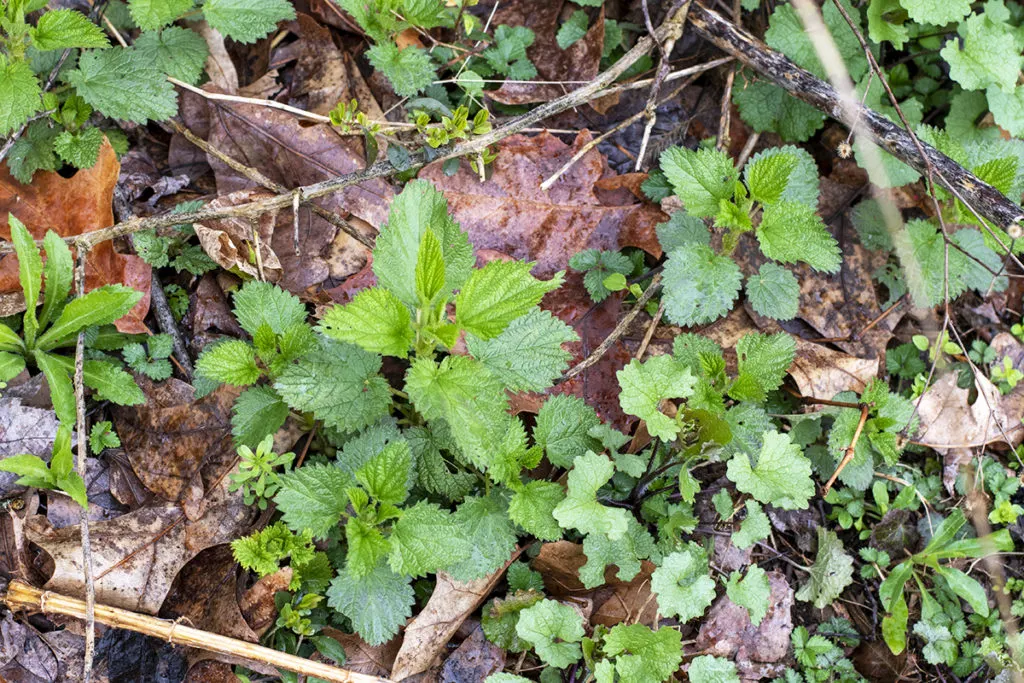
There are a huge range of wild edibles that grow on the ground.
Novice foragers will also quickly learn to recognize common edible berries, nuts and hedgerow fruits. Some may even make forays into fungi foraging or even take a foraging excursion to a nearby coast to forage for seaweeds and coastal plants.
Many foragers, however, miss out on the bounty of delicious fresh leaves from trees and large shrubs with edible leaves in their environment.
There are a number of trees that have leaves that are delicious in the spring when they first unfurl. They can be an interesting and useful addition to spring salads.
Other trees have leaves that can be consumed all season long.
Why Grow Your Own Trees With Edible Leaves?
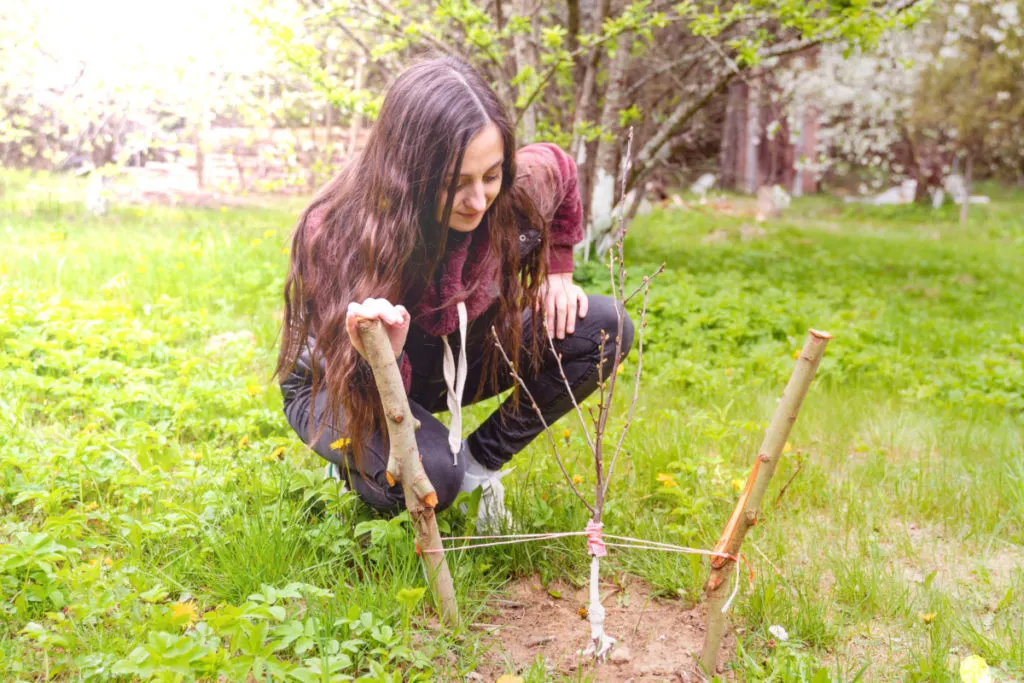
Growing your own trees with edible leaves can be a great idea. Trees often take little work to grow, especially when compared to annual crops.
That means that you can gain an often abundant yield of edible leaves without much work.
Many of these trees are great additions to a low-maintenance forest garden.
Some are also great for wild hedgerows or shelterbelts. They can also be used as stand-alone ornamental or specimen trees to enhance your outside space.
Most don’t only provide edible leaves. They also provide a range of other yields, from fuel or wood for crafting or construction, to fruits, nuts, seeds, sap and many more things of great use around your homestead.
The edible leaves are just one extra bonus on a long list of benefits. Along with foraging the leaves from these trees, you may wish to grow them as well.
10 Trees To Grow for Edible Leaves
If you want to take advantage of this unusual source of spring greens, here are some trees with edible leaves to look out for.
If you do not already have examples close to where you live, these are trees that you should definitely consider growing in your garden.
1. Beech
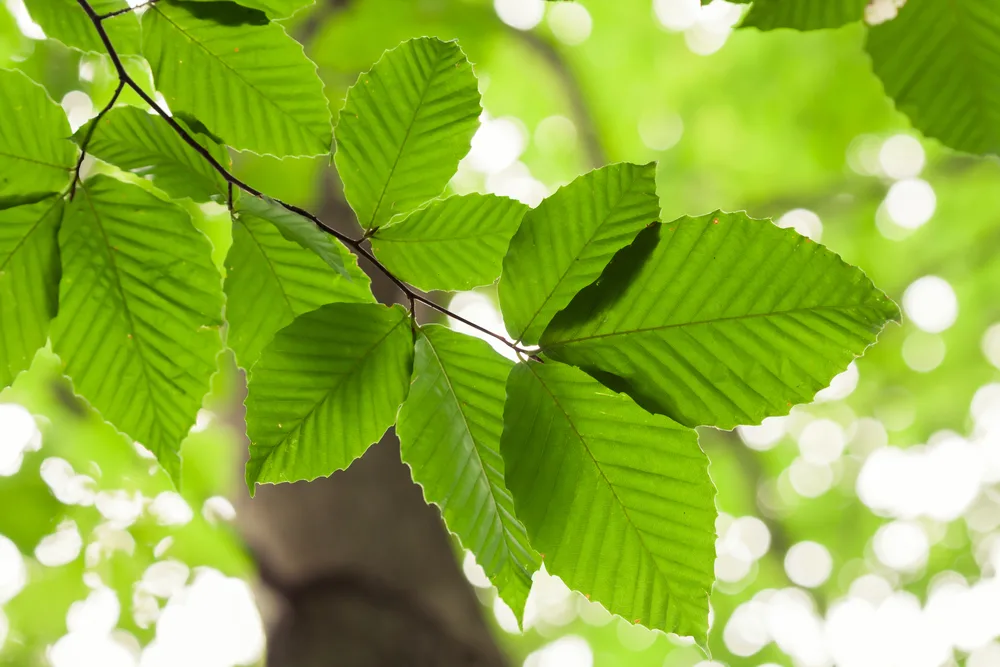
The European beech (Fagus sylvatica), American beech (Fagus grandifolia) and Japanese beeches (Fagus crenata and Fagus japonica) all have leaves that are edible when very fresh and new.
First thing in the spring, when the leaves first unfurl, they can be picked and eaten raw.
They are a great salad ingredient with a mild and pleasant flavor that resembles that of sorrel. However, these are good to eat only over a limited season.
Only the very youngest leaves should be used since older leaves quickly become tough.
European Beech is often used for hedging and in gardens, as well as being found in wild woodland.
It will grow to 30m tall if left unchecked. But though intolerant of coppicing, it copes well with light pruning, and so can easily be kept in check for hedging, or a wilder garden border.
American Beech is an alternative US native for US gardens. This tree makes a shorter specimen, growing to around 10m in height when fully grown.
It can be a good choice for a woodland or forest garden, or as an individual specimen tree or shade tree.
Beeches are dynamic accumulators and great for forest gardens. They are dynamic accumulators which also have a wide range of other uses.
Both types can grow in full shade, semi-shade or no shade, and can cope with a wide range of different soil conditions. However, they prefer soil that is well-drained and are not a good choice for heavily waterlogged sites.
2. Birch
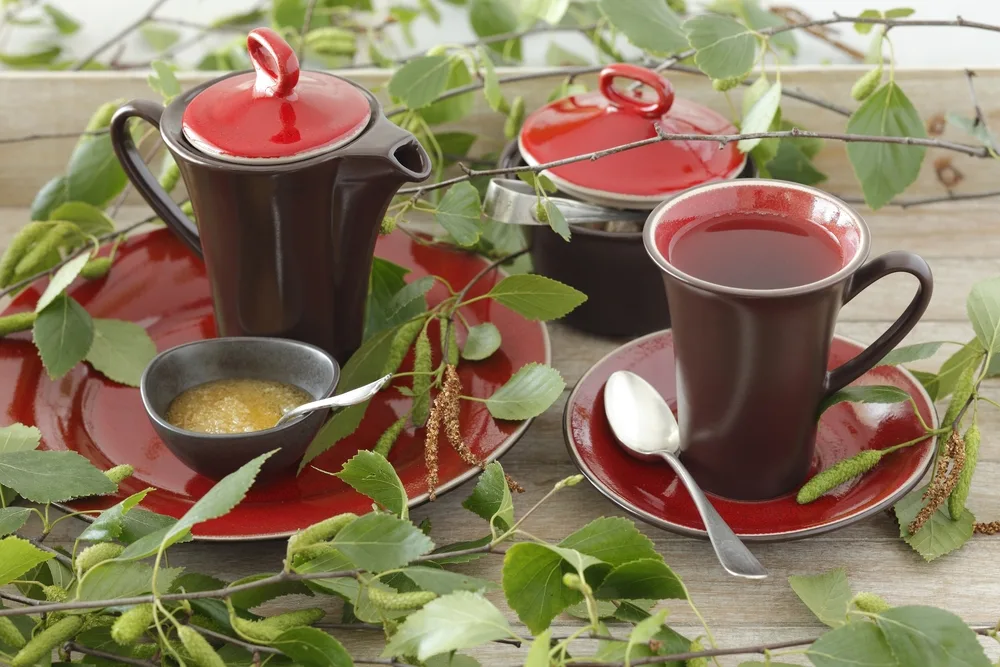
European White Birch/ Silver Birch leaves can also be harvested and used in salads early in the spring. They have a hint of bitterness, somewhat akin to radicchio, and so are best used in combination with other, milder leaves.
The leaves can also be dried and used alongside other herbs to make a healthy herbal tea.
In the US, where there are many Betula subspecies, the leaves can also be harvested for a tea similar to traditional green tea.
However, the leaves are generally considered to be too strong in taste for use in a salad. They can be used to add flavor and nibbled in small quantities in a survival situation.
Birch trees can also be harvested for sap, and bark for various uses. Birch trees also host chaga – a fungus well known to foragers.
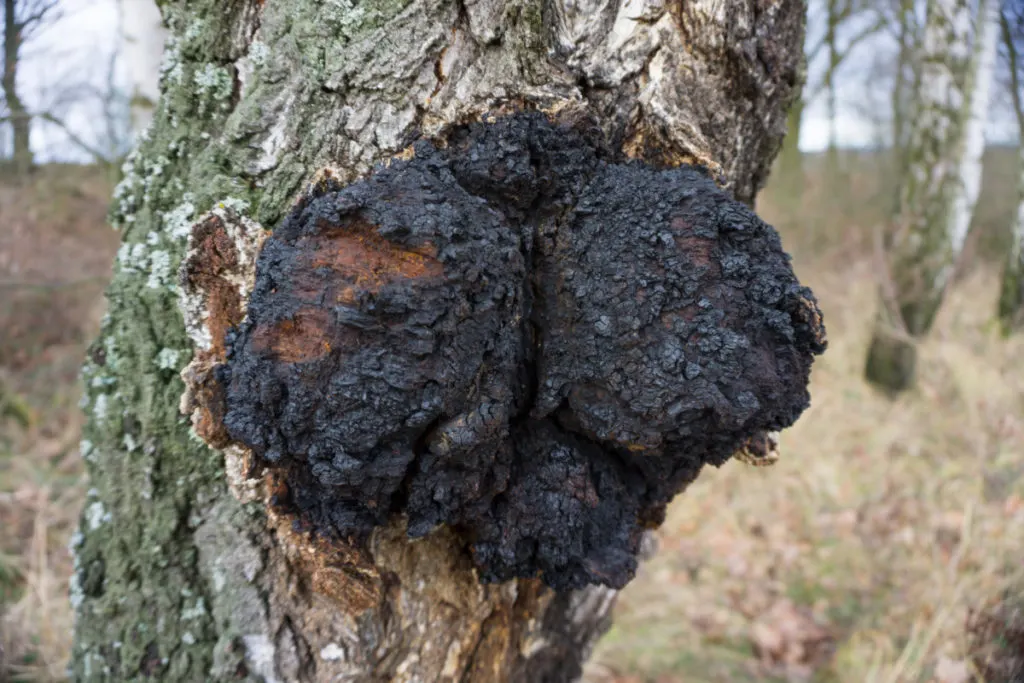
Caution is required with birch species, however, as some people have allergic reactions.
Birch trees of many different subspecies have a range of uses. They can be excellent pioneer species and can be used for many applications, both in the garden and when harvested.
The European birch, paper birch (Betula pendula) and many other birches can be useful in the initial establishment of a woodland or a forest garden.
They grow to around 20m in height.
3. Hawthorn
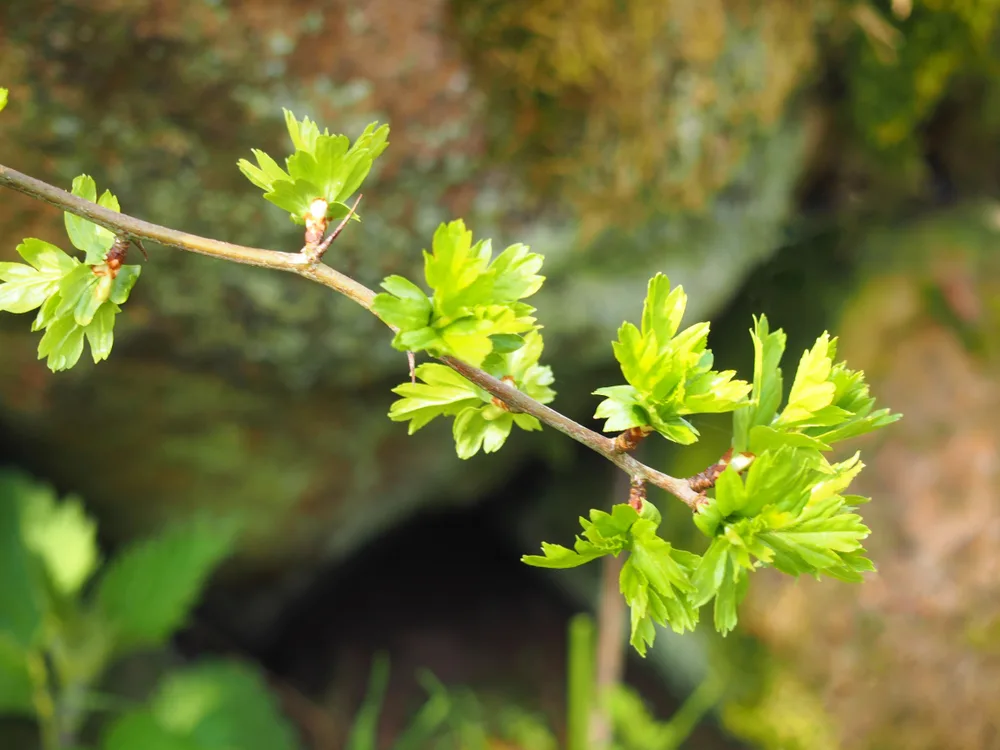
Crataegus monogyna, native to Europe, but naturalized in the United States and Canada, is traditionally a well-known edible in parts of the UK.
The ‘haws’ or fruits, are the best known forager’s food and are used for jams and jellies. But the young leaves are also a great hedgerow snack.
In some areas, the small tree or shrub is known as ‘bread and cheese’.
It does not taste like these things. But has been given the name because it is a great wild edible to munch on when out for a walk.
These leaves are one of the tastiest spring greens. They have a rich, nutty taste and are great in salads.
If you plan to introduce this tree to your garden, note that it is potentially invasive in its non-native range.
It is fully naturalized and a potential pest in northern California, for example, and is potentially problematic on the Pacific coast of North America.
Note, also, that there is a range of other Crataegus species, and though none are poisonous, they will not all be as palatable as the subspecies mentioned above.
4. Linden/ Lime Trees
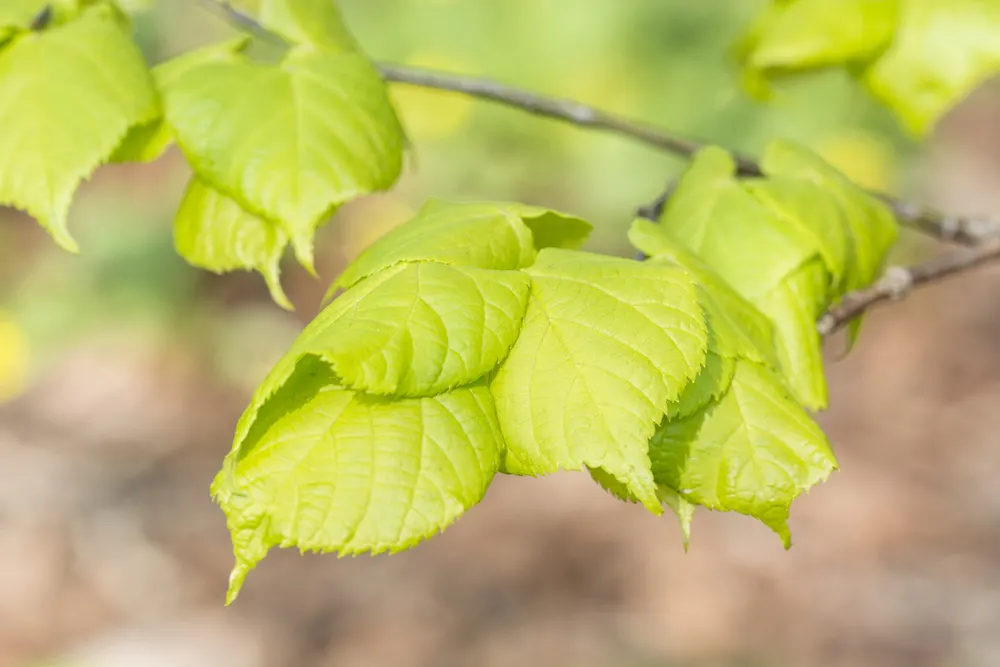
Linden trees, the common lime, (Tilia x europaea), small-leaved lime trees (Tilia cordata) and large-leaved lime trees (Tilia platyphylos) have heart-shaped leaves.
They also taste great when eaten young. They have a delightful crispness that makes them resemble iceberg lettuce when used in a salad.
But they have far more nutritional merit.
The leaves can be harvested from spring right through to early autumn from the young growths at the base of the tree.
In North America, the leaves of the American Linden (Tilia americana) are also excellent in salads. The leaves can also be cooked as greens and used, like spinach or other cooked greens, in a wide range of different recipes.
Lindens are delightful individual specimen trees for gardens.
They attract wildlife, are dynamic accumulators, and so also work well in a woodland setting or a forest garden. They can also work well as part of planting for a windbreak or shelterbelt.
5. Mulberry
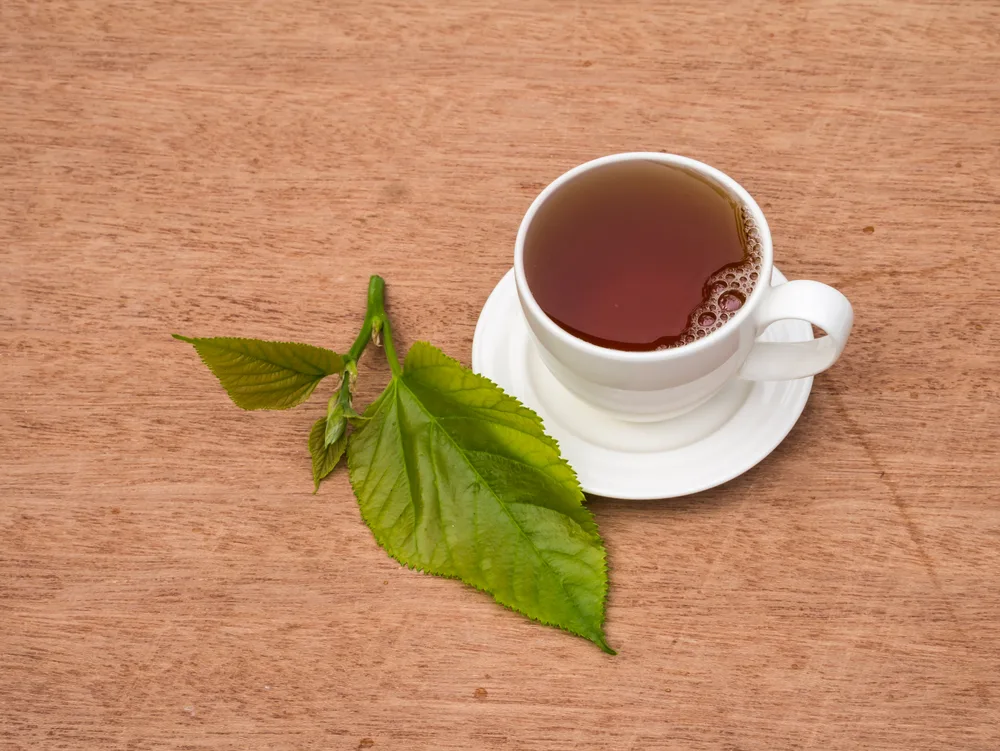
Mulberry trees are an incredibly useful tree. Not only do they produce an edible crop of berries later in the year, but they also provide leaves that can be eaten.
Mulberries are best known, perhaps, as a host for the species of silkworm that make the silk used to make fabric.
The worms eat the leaves before creating their cocoons. But humans can eat them too. However, it is important to note that the leaves must be cooked before they are eaten.
You can boil them and discard the water, and use them as greens for a range of recipes. You can also stuff them in the same way that you might stuff vine leaves.
Mulberry leaves have also been used for centuries to make tea.
Mulberries are small trees that are a great choice for many organic gardens.
It is a quick grower and works well and produces abundant berries in a wide range of settings. A harvest of some leaves is just an added bonus.
6. Maple
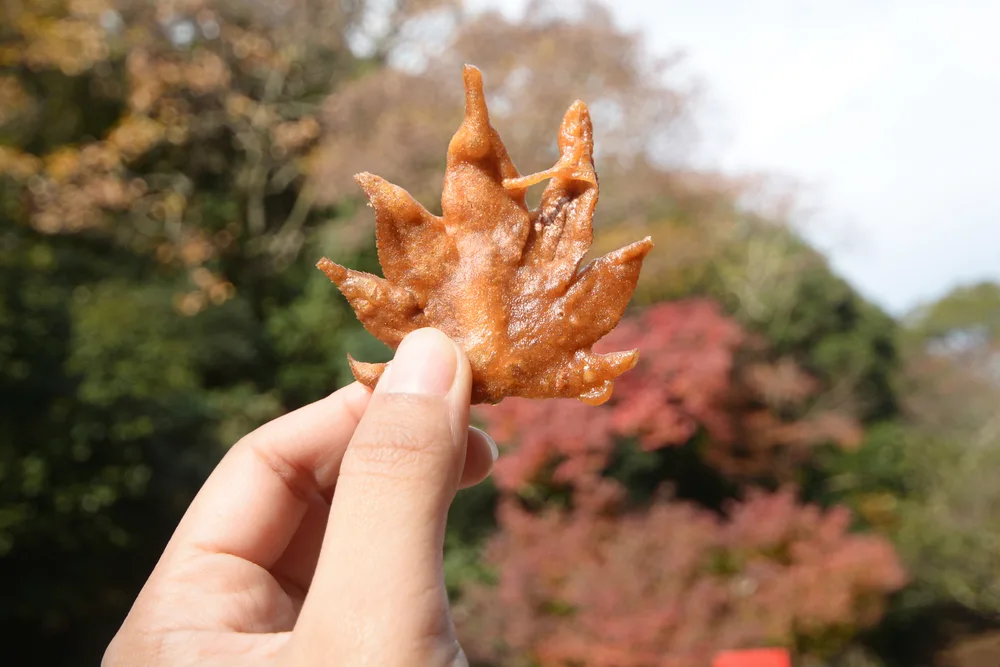
Maples are of course best known for their sap, which is used to make maple syrup.
Looking at the large, fibrous leaves, you may be surprised to learn that they are edible. But maple leaf tempura is a traditional snack in Minoh City, in Japan.
You can collect healthy leaves from sugar, red and silver maples and follow the same recipe.
Patience is needed to eat these leaves.
They need to be covered in salt and left in a sealed container in a cool, dark space for ten months. They are then coated in batter and fried.
Deep Fried Maple Leaves @ ediblewildfood.com
Maples are of course delightful specimen trees and can find a place in many gardens.
7. Goji
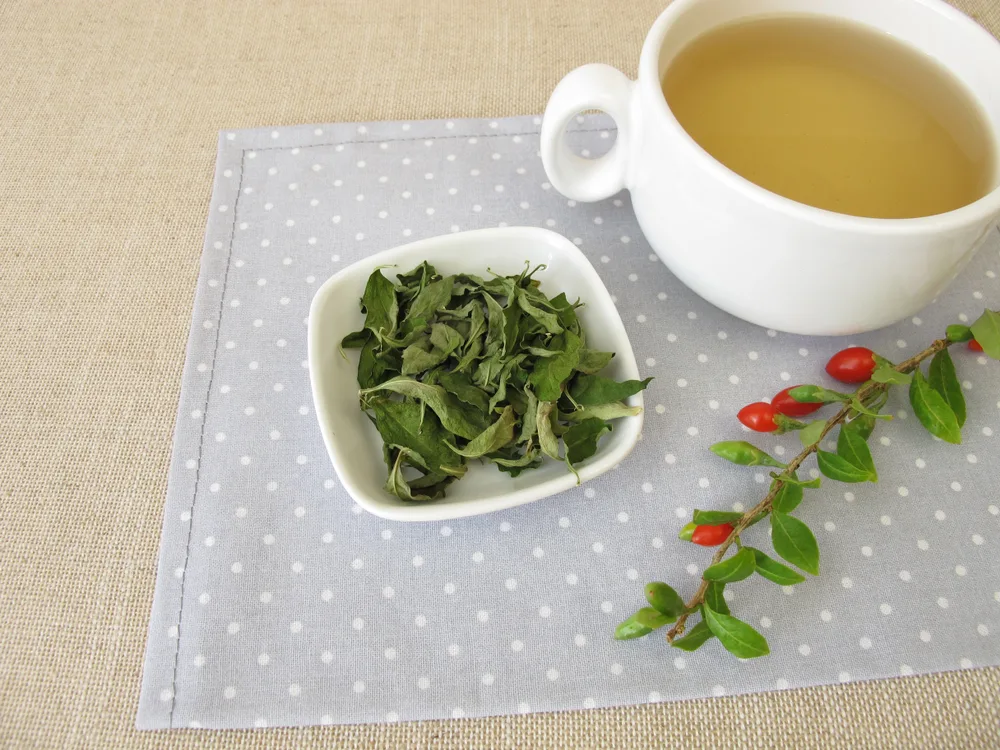
Goji berries are gaining notoriety as a ‘super food’. But the berries (also known as wolfberries) are not the only yield this tree can provide.
The leaves of this small tree or large shrub are also delicious and nutritionally beneficial.
They can be eaten raw (though are rather bitter). But they are best cooked in a stir fry or in another recipe.
Note, no toxicity has been seen. But the tree belongs to a family of plants that often contain toxins, so care should be taken.
However, the use of the leaves is well-documented in many areas. The taste is said to resemble cress. The leaves are also sometimes used as a tea substitute.
Goji is mostly grown for its berries, which are generally dried before use.
They have a wide range of health benefits. However, the leaves could be a useful additional yield.
Goji is native to southeast Europe to southwest Asia and is naturalized in some parts of the British Isles.
It can be grown in USDA hardiness zones 6-9.
8. Moringa
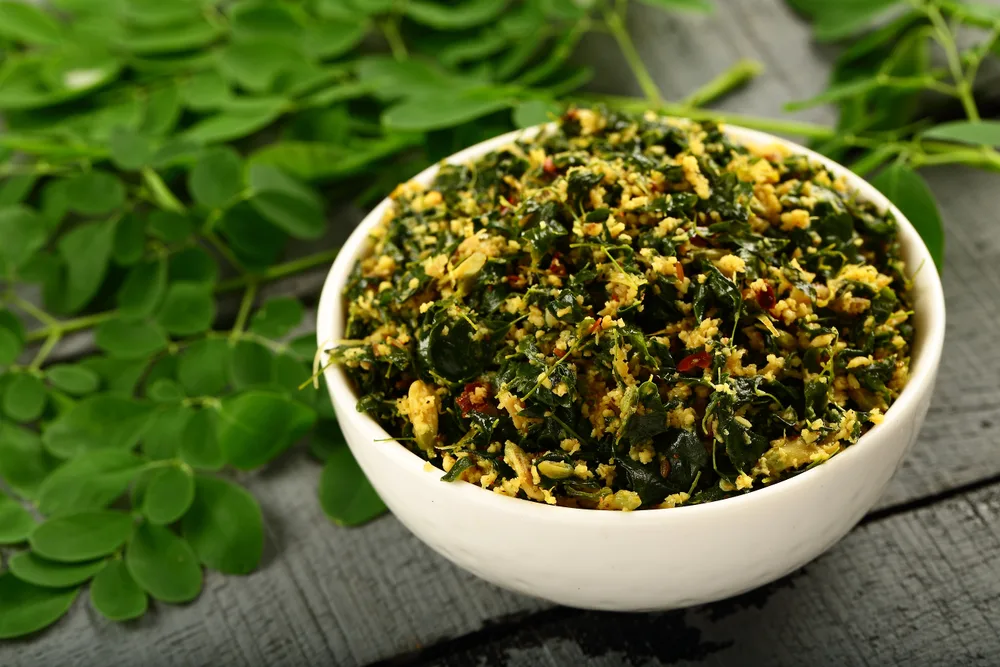
Moringa is native to East Asia and the Indian subcontinent and can grow in USDA hardiness zones 10-12. In warm temperate and tropical climes, this is one of the best trees with edible leaves.
The leaves can be eaten raw.
They can be great in salads, but can also be cooked and added to a wide range of recipes as a multi-purpose green leaf vegetable. The taste is reminiscent of horseradish, mustard greens or rocket, with a slightly nutty taste.
Moringa is often employed in permaculture or organic growing designs in the appropriate climate zones.
It is a great pioneer species, a dynamic accumulator with deep taproots, and is often used for hedging, crop shade, alley cropping and in agroforestry or forest gardens.
The oil derived from the seeds and pods of this tree is the primary yield. But again, the leaves can be a real bonus.
9. Needles From Spruce, Pine & Fir
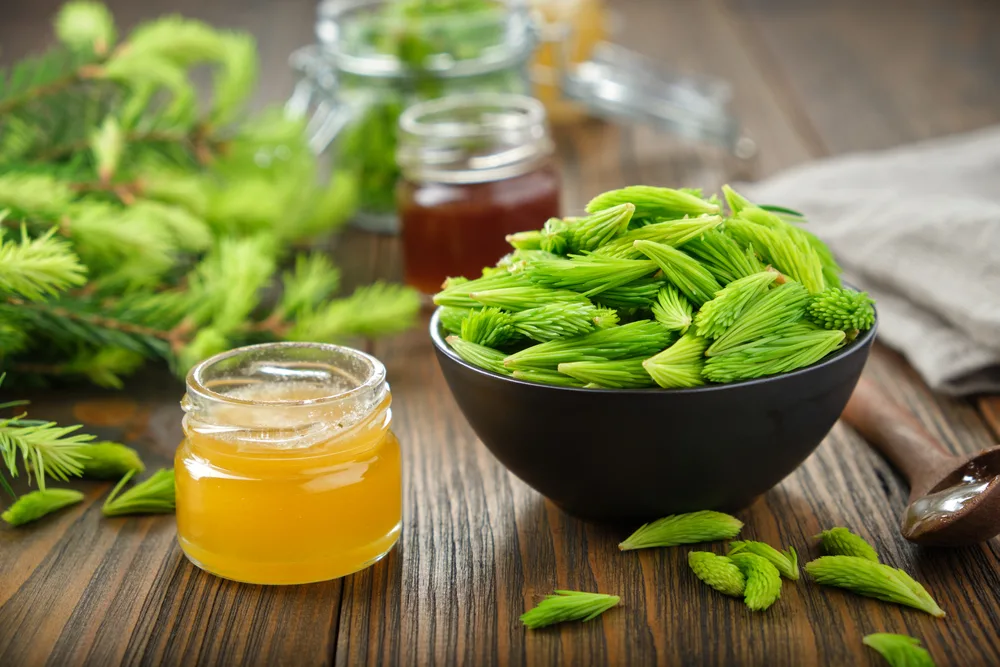
In addition to exploring the trees with edible leaves to grow in your garden, you should also consider the potential of the needles from spruce, pine and fir trees.
All spruce, pine and fir trees have needles that can be foraged and simmered in water to make a tea that is very high in vitamin C.
Note, however, that yew, which can look similar to the above, is poisonous.
Be sure, if you plan to forage needles to make tea, that you are absolutely certain that you have identified the tree correctly.
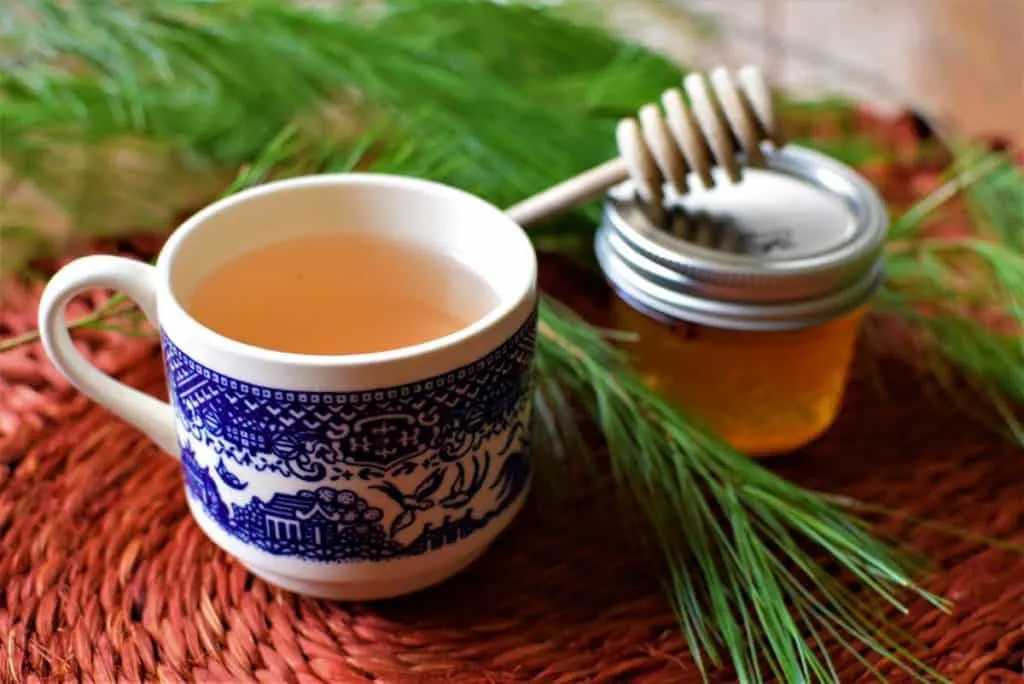
The fresh tips of spruce in the spring can also be dipped in honey and eaten, or steeped in apple cider vinegar to create a taste surprisingly similar to that of balsamic vinegar.
For even more ideas using pine needles check out – 22 Impressive Pine Needle Uses You’d Never Have Thought Of
10. Walnut

Preferably the English walnut, although black walnut leaves can also be used for some things. Cheryl has an entire article about ways to use walnut leaves, including tea and walnut leaf liquor.
6 Brilliant Uses for Walnut Leaves You Never Knew
Do you grow any of the trees mentioned above? Have you eaten their leaves (or needles)?
If not, it might be time to ‘branch out’ and give them a go. Forage them from your area, or grow your own in your garden.
And don’t stop there, you’ll want to read.
7 Uses For Citrus Leaves You’ve Got To Try

Get the famous Rural Sprout newsletter delivered to your inbox.
Including Sunday musings from our editor, Tracey, as well as “What’s Up Wednesday” our roundup of what’s in season and new article updates and alerts.

